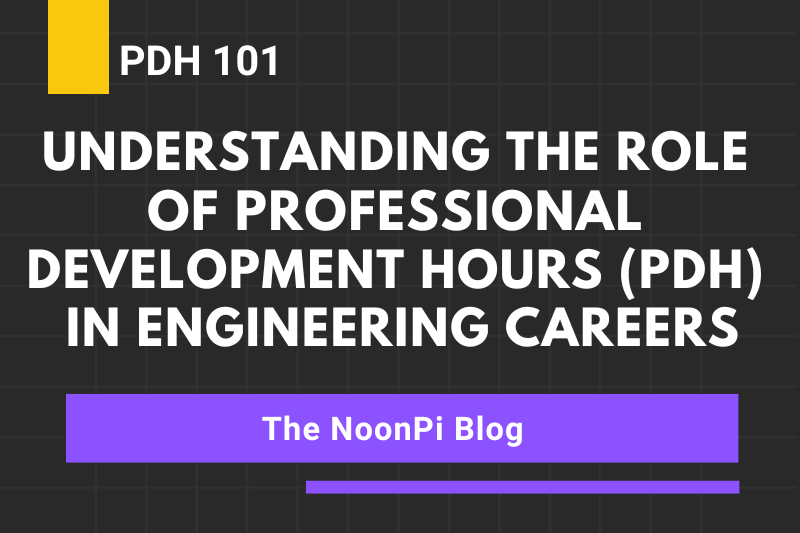In the dynamic world of engineering, staying up-to-date with the latest trends, technologies, and industry practices is not just a nice-to-have—it’s essential. It’s here that Professional Development Hours (PDH) come into play, providing a structure for engineers to maintain their professional competency. This blog article aims to explore the significance of PDH, how it promotes career growth, and the various ways to accrue these valuable hours.
The Why: Importance of PDH in Engineering
With the pace of technological advancement today, the engineering knowledge and skills you gained a few years ago may already be outdated. To ensure the safety, efficiency, and innovation in designs and projects, engineers must continuously upgrade their expertise. That’s where the concept of Professional Development Hours (PDH) comes in.
PDH is a unit of measure that quantifies the time invested in professional development and learning activities. Engineers are typically required to earn a certain number of PDHs within a specified period for license renewal. By mandating these hours, licensing boards ensure that engineers continually update their knowledge and skills, keeping them relevant and effective in their practice.
The Impact: PDH and Career Growth
Apart from regulatory compliance, PDH also plays a pivotal role in an engineer’s career trajectory. Engineers who invest in their professional development are more likely to be efficient problem solvers, innovative thinkers, and effective communicators. They are often better equipped to handle novel situations, lead teams, and deliver successful projects.
As such, accumulating PDH can directly contribute to career advancement. Employers often recognize and reward the dedication to learning and self-improvement that these hours represent. Moreover, the courses and activities you choose for PDH can help you specialize in a particular area, transition into a new engineering discipline, or broaden your skills — all of which can open doors to new career opportunities.
The How: Accumulating and Managing PDH
There are numerous ways to earn PDH, and the options have only expanded with the rise of online learning. Traditional methods include attending seminars, workshops, and conferences. In recent years, online courses and webinars have grown popular, offering flexibility and a wide range of topics. Other activities such as authoring technical papers, obtaining patents, or teaching a course can also qualify for PDH.
When it comes to managing PDH, staying organized is key. Keep track of the hours you’ve earned, where they came from, and when you earned them. Consider using a PDH tracking tool or software, and always retain documentation of your activities in case of an audit.
It’s also crucial to plan your PDH strategically. Be proactive in choosing courses that not only fulfill requirements but also align with your career goals. This way, each PDH can be a step toward your professional aspirations.
Conclusion
PDH is an essential tool for maintaining competency and promoting career growth in the fast-paced world of engineering. By embracing a mindset of lifelong learning, engineers can navigate the technological shifts in their field, enhance their expertise, and broaden their career opportunities. While PDH is a requirement for license renewal, its value extends much further: it’s an investment in your professional future.









Leave A Comment